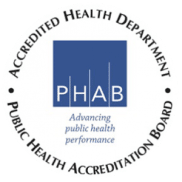Alpha-Gal Syndrome
Alpha-gal syndrome (AGS), is a delayed allergy to mammalian meats and products and is initially caused by a tick bite. Sometimes referred to as the “red meat allergy” since many AGS patients have allergic reactions after consuming beef or pork. The condition is named after the sugar molecule, Galctose-alpha-1,3-galactose (or Alpha-Gal for short) which can be found in all non-primate mammals. Since reactions to eating mammalian products is delayed by 2 to 10 hours, the proper diagnosis is often delayed or misdiagnosed. Many people who are afflicted with AGS must be vigilant about the ingredients they consume because an allergic reaction can be severe or life-threatening.
Delayed allergic reactions to alpha-gal have been shown to be caused by several tick species worldwide (e.g. Ixodes ricinus in Europe and Ixodes holocyclus in Australia), with evidence suggesting that the Lone star tick (Amblyomma americanum) is the primary cause of AGS in the United States. Lone Star ticks carry the alpha-gal molecule in their saliva, which is also found in red meats, but not in humans. Normally, alpha-gal in red meat poses no problems for people, but when a Lone Star tick bites a person, it transfers alpha-gal into the bloodstream. In some people, this can cause the immune system to produce antibodies to fight the sugar. The next time that person eats meat from a mammal (such as beef, pork, lamb, venison, goat, and bison), the meat triggers the release of histamines, a compound found in the body that causes an allergic reaction. Alpha-gal can also be found in gelatin and glycerin, which can be found in some non-meat foods, medications, and cosmetic products. Non-mammalian meats such as fish and chicken do not contain alpha-gal.
AGS is different from other food allergies because of the delayed onset of symptoms. Most allergic reactions to foods occur almost immediately, but AGS reactions can occur up to ten hours after a person eats meat. Often, the reaction can be in the middle of the night, and the connection to something eaten hours ago isn’t made easily. Symptoms of AGS include abdominal pain, nausea, diarrhea, vomiting, heartburn, hives, itching, anaphylaxis, facial swelling (lip, throat, eyelids, tongue), shortness of breath, cough, wheezing, and low blood pressure. Not everyone with AGS will have the same symptoms or react to the same foods or products. While many AGS patients will react to beef or pork, dairy products such as milk and cheese can also cause allergic reactions.
In the United States, the allergy most commonly occurs in eastern and southern states, which corresponds to the distribution of the Lone Star tick. In the southern United States, where the tick is most prevalent, allergy rates are 32% higher than elsewhere. Arkansas was the first state to make AGS a reportable condition in September of 2023. Data from AGS surveillance is crucial for learning more about this novel condition.
Downloads & Resources
Alpha-Gal Syndrome Grand Rounds Presentation: October 1, 2020
CDC


